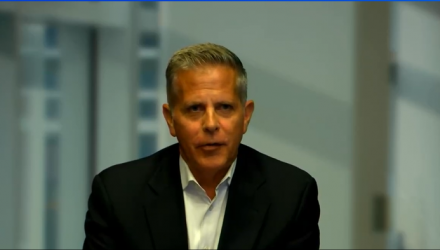The VettaFi Fixed Income Symposium continued apace on Monday, turning to the subject of growing active ETF interest. Active ETFs have had a strong year so far in 2023, and not just in equities, with active ETFs playing a potent role in debt portfolios. VettaFi’s head of ETF research, Todd Rosenbluth, hosted a conversation on the topic between Stephen Laipply, global co-head of iShares fixed income ETFs and Anmol Sinha, fixed income investment director at Capital Group.
Both speakers took the opportunity to tout the advantages that ETFs add to fixed income. Whether adding transparency or intraday trading ability, both active and indexed ETFs have a role to play, the duo emphasized. Fixed income ETFs can be a powerful tool, particularly in stressed markets, Laipply said.
“We actually don’t believe in this concept that there are these distinct buckets of investors who are active versus ‘passive.’ Everybody’s active… you’re making active decisions, whether you use an active manager or an index product, that’s an active decision on your part,” Laipply said.
Pairing Active and Passive Strategies
Investors can, for example, pair an active ETF like iShares’ BlackRock Flexible Income ETF (BINC) with an indexed strategy like the iShares Core U.S. Aggregate Bond ETF (AGG).
“The reason for launching BINC was to give advisors the ability to create this total portfolio exposure,” he said. “You can disaggregate your core-plus exposure into a low-cost core index ETF like AGG, but you can modulate around that by adding the plus, the income-generating sectors… which is in fact BINC.”
“It allows advisors to have control over what they want that plus to look like,” Laipply added.
Active adds the ability to navigate inefficiencies inherent to the fixed income landscape, according to Sinha. Due to the fact that various banks, insurance companies, and central banks have to hold bonds, about 40% of the fixed income market include players that aren’t maximizing their total return. Active fixed income ETFs can navigate those inefficiencies.
At the same time, he said, fixed income index ETFs end up lending into issuers with more debt outstanding because of how their indexes operates, Sinha said — though Laipply responded by noting that that doesn’t take into account the quality of assets backing that debt.
Navigate Fixed Income Inefficiencies in Active
Capital Group offers, in turn, the Capital Group Core Plus Income ETF (CGCP), which actively invests in corporate and government debt and bonds from around the world with no credit or maturity limits.
“What we try to do in generating income on the front end is to say, ‘Let’s get a portfolio that’s really high-quality that has a diversity of asset types,’” Sinha said. “One of the places we see value today is the yield curve. The yield curve is very inverted.”
The replay of the Fixed Income Symposium is now live; registration to view on-demand is available at the link.
For more news, information, and analysis, visit VettaFi | ETF Trends.
